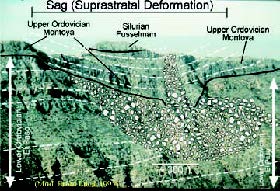A Review of Coalesced, Collapsed-Paleocave Systems and Associated Suprastratal Deformation
DOI:
https://doi.org/10.3986/ac.v36i1.214Abstract
Coalesced, collapsed-paleocave systems and associated suprastratal deformation appear to be prominent diagenetic/structural features in carbonate sections at/near composite unconformities. The basic architecture of the system can be divided into two sections. The lower karsted section, where high-density cave formation took place, is preserved as massive breccias commonly displaying a rectilinear pattern in map view. The overlying suprastratal deformation section is characterized by large, circular to linear sag structures containing faults and fractures. Regional distribution of coalesced, collapsed-cave systems commonly appears as large-scale (hundreds to thousands of square kilometers in area), rectilinear patterns with areas of concentrated, coalesced breccias separated by relatively undisturbed host rock. This pattern may reflect development of the paleocave system along fracture swarms.
Collapsed-paleocave systems are large, complex features that show broad-scale organization. The complete paleocave system may need seismic data or large, mountain-scale outcrops to define their architecture and distribution.
Downloads

Downloads
Published
How to Cite
Issue
Section
License
Authors guarantee that the work is their own original creation and does not infringe any statutory or common-law copyright or any proprietary right of any third party. In case of claims by third parties, authors commit their self to defend the interests of the publisher, and shall cover any potential costs.
More in: Submission chapter




